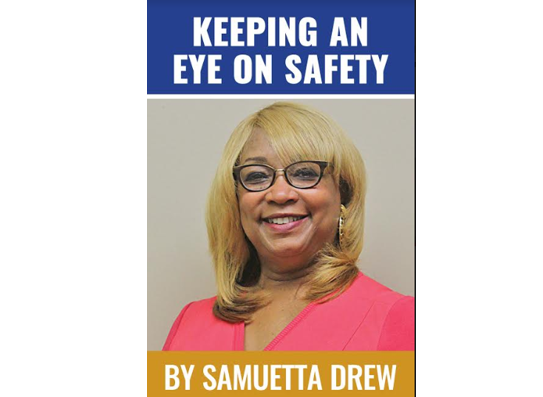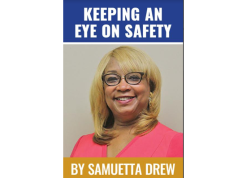By Samuetta Hill Drew
Last week’s safety article began discussing how many in our country celebrate Thanksgiving differently through destination travel and/or varied menu selections. This week’s article will continue the safety tips for those individuals or families who select wild game meat, such as venison, as their meat of choice in lieu of turkey or ham.
The contents in this and last week’s safety articles about wild game meat come from varied hunter’s guides and the Wisconsin Department of Natural Resources. Not being a hunter but realizing how many people are and enjoy venison for Thanksgiving, it was deemed important to share safety facts from various hunting experts.
The next safety tip to discuss involving venison preparation is the cooling process. The cooling process should begin within a couple of hours of harvesting the deer. Propping open the body cavity, keeping the carcass in the shade, and exposing it to air movement are all ways to improve cooling. By suspending the deer from an overhead object, you can greatly speed up the cooling process since the air reaching the carcass will carry away any heat and provide a cooling effect. While cooling is important, protect the carcass from freezing. If the carcass freezes within the first six hours after harvest, the meat can become tough.
Many hunters choose to age their deer’s carcasses before cutting it into different types of meat selections such as chops and roasts. Aging refers to holding carcasses at 35 to 45 degrees Fahrenheit to allow natural enzymes to tenderize the meat. It can take from 7-10 days for this aging process to garner the results desired where there is a noticeable difference in your venison steaks.
If this is an option you select, make sure you weigh the benefits against the drying out of exposed surfaces – dehydration and possible bacterial spoilage. Temperature is extremely important. Tenderizing will not occur if the carcass is frozen, and if the temperature is too warm bacteria can grow quickly and spoil the meat.
Many hunting sources have issued health advisories related to lead in venison. Lead bullet fragments in venison present a health hazard to children under the age of 6 and pregnant women. Below are some safety protections against lead contamination:
• Consider alternative expanding, non-lead ammunition such as copper or other high-weight retention lead bullets, such as bonded bullets.
• Practice good hunting skills, aiming for the vitals behind the shoulder, or the neck or the head. Do not shoot a running deer.
• Avoid consuming internal organs such as the heart which may contain extra lead from heat-lung shots.
• Take care to avoid processing any meat with excessive shot damage. Trim a generous distance away from the wound channel and discard any meat that is bruised, discolored or contains hair, dirt, bone fragments or grass.
Keeping an Eye on Safety during the preparation of your Thanksgiving meal is essential in helping write the script to your great Thanksgiving Story for 2022.



